Written by Rebecca Krauss aka Nurse Bec
‘Tis the season for sunny skies, warm weather, and bountiful gardens!
There is extensive documentation of the benefits of consuming organic produce and avoiding toxic pesticides and herbicides. From a healthy gut flora and microbiome to decreasing your risk of chronic disease and cancer, eating an organic diet when you can is one way you can live healthier in today’s toxic world.
However, while eating organic food can definitely reduce your overall toxic load, there are some major obstacles to eating an all-organic diet—namely availability and cost. This article will discuss one way to combat these obstacles: growing your own food with container gardening!
Table of Contents
- Why Should You Start a Container Garden?
- Tips to Keep in Mind with Non-Toxic Container Gardening
- Safest Containers for Growing Food Outside
- Metal Tubs
- Behrens
- Vego Garden
- Grow Bags
- Bio-D Grow Pots
- Sand Baggy Burlap Bags
- Wooden Planters
- Cedar Planter Boxes from EarthEasy
- Elevated Planter from VegTrug
- Raised Bed from Cedar Planters
- Boldly Growing Cedar Raised Planter Box
- Terra Cotta Pots
- Glass Pots & Mason Jars
- Terra Cotta Glass Pot
- Sheer Glass Pot (Etsy)
- Garden Jar
- Mason Jar Tutorial
This article contains affiliate links, which means we may earn commission if you decide to make a purchase.
Why Should You Start a Container Garden?
Growing produce at home can help lower the cost of buying organic produce at the store. But planting a full in-ground vegetable garden is not possible for everyone, especially those who rent or move around a lot.
Container gardening, however, is a convenient solution for renters, people who relocate often, or those who like to move their plants from the outside to inside based on the season. Container gardening can also be good for moving plants around the yard for different sun exposure.
Related:
Home
Are There ANY PFAS-Free Fertilizers for Your Home Garden?
Most fertilizers are made with biosolids that contain PFAS. Here’s what to know about PFAS in fertilizer and how to reduce forever chemicals in your garden.
Tips to Keep in Mind with Non-Toxic Container Gardening
The first thing to account for as you plan your container garden is that your space will be somewhat limited. The plants are limited to the size of the container they’re planted in, so factor in the size the plant is expected to grow to avoid root confinement.
Some plants also consume nutrients more readily from the soil, so you may need to change out the soil annually.
Ensuring adequate drainage of the plant and appropriate watering will also make for happy plants.
Other factors of gardening (whether in a container or in-ground) include quality soil, water, and non-GMO heirloom seeds.
The Soil
For the soil, try finding an organic and high-quality soil at your local garden center or hardware store. Some good brands to check out include:
The Water
For water, your main options are water from the tap/hose, or rain water. We often have to weigh the pros and cons of various options as there is no “perfect solution.” Even rain water has PFAS in it now, unfortunately.
If you want to, you can water your indoor plants with your filtered drinking water in order to avoid contaminating your soil and produce with toxicants such as PFAS, chlorine disinfection byproducts, heavy metals, etc. Just remember that if you use water that’s been filtered with something like reverse osmosis, that you’ll probably want to add minerals and nutrients back to the water so that your veggies can absorb them.
Depending on how many plants you have though, it may not be realistic to use filtered water. That’s okay; try not to stress out about it. You’re still doing yourself a lot of good by growing your own plants, even if the water you use is not 100% “clean.” Investing in a hose filter and/or a better hose that’s made with food-grade materials is another thing you can do to reduce exposure to toxicants like PVC and heavy metals. If you’re using well water, you can test it to make sure it’s free from common contaminants.
Rainwater can also be collected systematically and reused for the garden. (Here are some tips for how to do that.)
With all of that in mind, remember that toxins are ubiquitous. The reality is that they are present nearly everywhere in our environment, so everything will be exposed to some level of toxins. Just remember that there will be less in your garden compared to a conventional mass-production farm.
The Seeds
Look for non-GMO heirloom seeds. Here are several good resources for both seeds and plants:
Remember that certain plants grow better in certain climates. You can look up your growing zone here to see if the plants you want to grow are suitable for your area. And if you need it, here is more information about learning how to garden!
The Containers
Lastly, there is the container aspect of container gardening!
Now let’s get to it. Here are some options for container gardening categorized by growing location: outside, indoors/outside, and indoors.
| Type of Container | Pros | Cons |
|---|---|---|
| Synthetic Grow Bags (ex: polyester) | – More durable; won’t decompose. – Lightweight & flexible. – Compact. – Affordable. | – May slowly leach toxins into the soil over time, especially in the heat. – Smaller capacity |
| Natural Grow Bags (ex: jute) | – Healthier; no toxins leaching into the soil. – Smaller capacity | – More likely to slowly decompose over time; may need to be replaced each year. – Lightweight & flexible. – Compact. – Affordable. |
| Metal Tubs | – Last a really long time. | – Some concern about potential of heavy metal leaching. – Less compact; takes up more space. |
| Wooden Boxes | – Will break down over time and have to be replaced. – Can be more prone to mold and mildew. | – Generally made from safe & natural materials (just make sure about the finish). |
| Terra Cotta Pots | – Have been used for centuries. – Look nice indoors and outdoors. | – Could potentially leach small amounts of heavy metals. – Fragile – Smaller capacity |
| Glass Pots & Mason Jars | – Inert; doesn’t leach. – Good for indoor growing | – Fagile – Smaller capacity |
Safest Containers for Growing Food Outside
Metal Tubs
One of the best options for safe container gardening is steel tubs. Galvanized (or “hot-dipped”) steel refers to the process the steel has gone through to prevent rusting. The main concern with this option is that the zinc coating on the galvanized steel may leach into soil with extreme heat, acidity, or gradually over time. However, keep in mind that gardening soil is usually neutral, so there shouldn’t be any leaching due to acidity (unless the water you’re using is acidic).
Additionally, small amounts of zinc getting into your soil could actually be a good thing, since it’s an essential nutrient.
Sometimes aluminum can be used to make galvanized steels instead of zinc. Aluminum is not as safe as zinc if it should leach into the soil, but it’s also not as soluble as zinc (which means it won’t leach as easily).
There is also some concern about the potential of lead or other heavy metals being in metal tubs. To combat this potential problem, look for containers that are Prop 65 compliant and do not come with a Prop 65 warning label.
Steel tubs usually require drilling some holes in the bottom to ensure adequate drainage. Here is a tutorial on how to get started.
There are various sizes and depths, but remember that soil gets heavy so it may get harder to move the bigger it gets.
Here are some options to check out:
Behrens

Behrens has metal containers that come in a variety of different shapes and sizes. They’re Prop 65 compliant and available at retailers like Wayfair and Home Depot.
Vego Garden


Vego Garden is another option—they even have choices that are on wheels. Vego says they worked with the research lab at Texas A&M to develop their VZ 2.0 material, with is a zinc, magnesium, and aluminum coated steel. They say it has superior anti-corrosion abilities compared to your typical galvanized steel and has been tested to not leach any chemicals into the soil.
Grow Bags
Grow bags are a popular option for gardeners as they are flexible and lightweight. A lot of grow bags are made of synthetic materials to help avoid rapid decomposition from the elements, but keep in mind the heat from the sun is likely to transfer some of the toxins into the soil. But again, the benefits of growing organic produce at home still weigh heavy, so it may be worth it!
Bio-D Grow Pots
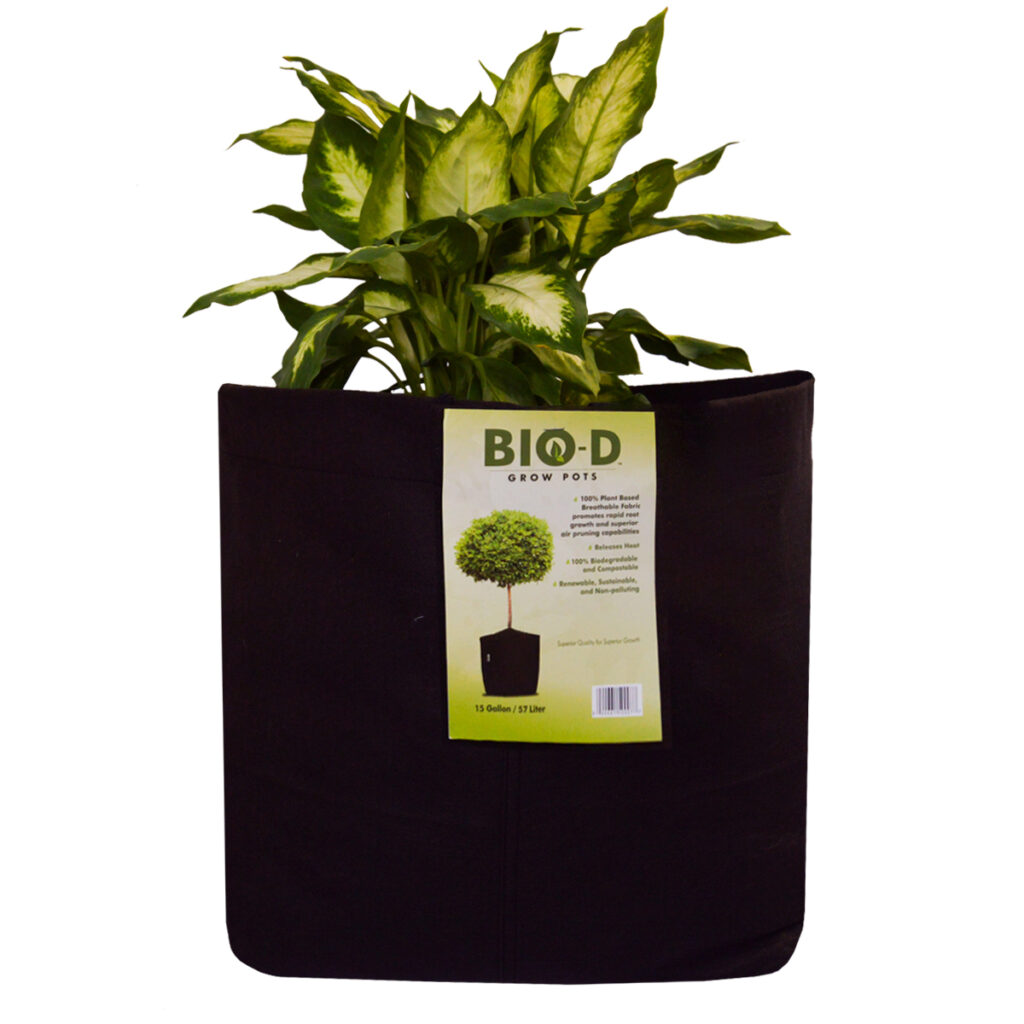
Bio-D claims that their heavy-duty grow bags are made out of plant-based fabric that is 100% biodegradable. They say their pots “break down naturally so that no waste or trace of them is left behind.” However, it’s not clear exactly what the fabric is made out of. We’ve reached out to Bio-D to get some more information and will update this if/when we hear back.
Sand Baggy Burlap Bags

Grow pots can also be fashioned with burlap bags made from jute plants. While the material is natural, keep in mind many burlap bags can be treated with chemicals to extend their life.
These bags from Sand Baggy have not been treated with any chemicals, but the material can also easily biodegrade and therefore the bag may need to be replaced seasonally.
The woven fabric also allows the roots to have freedom and flexibility rather than hitting the walls of a rigid pot.
Here are a few brands that make grow bags/pots made out of synthetics like polyester:
Wooden Planters
Wooden planters are a beautiful way to display your plants. The main downside to wood is that it will not last forever in the elements and will eventually need to be replaced due to damage from the sun and moisture. It’s also more likely to grow mold and mildew when it’s wet.
That being said, cedar is a hardier species of wood that tends to be more weather-resistant, so look for that if you can.
Cedar Planter Boxes from EarthEasy

To enhance this cedar box’s natural rot resistance, the wood is dipped in a non-toxic silica-based wood stabilizer, which they say strengthens the wood by forming microscopic glass crystals inside the wood fibers. The hardened silica creates a safe and effective barrier against moisture to help prevent rot. It does not change the appearance of the wood, which can be painted or stained, or left unfinished to gray naturally.
It’s available in a variety of different sizes. Or you can get one that’s even more elevated off the ground.
Elevated Planter from VegTrug

This planter uses FSC (Forest Stewardship Council) certified wood and is pre-treated with “a water-based food-safe finish.”
We reached out to VegTrug and asked them what exactly this finish is made out of. They sent us the breakdown, which is a food-safe mix of water, “synthetic resin” (which is somewhat unspecific), titanium dioxide, mica, and iron oxide pigment. They also sent us the third-party test results of heavy metal leach testing, and all of the results were “non-detect.”
Raised Bed from Cedar Planters

This planter uses Western Red Cedar (also FSC certified) that contains only naturally-occurring preservatives (no added chemicals) and galvanized steel legs.
Boldly Growing Cedar Raised Planter Box
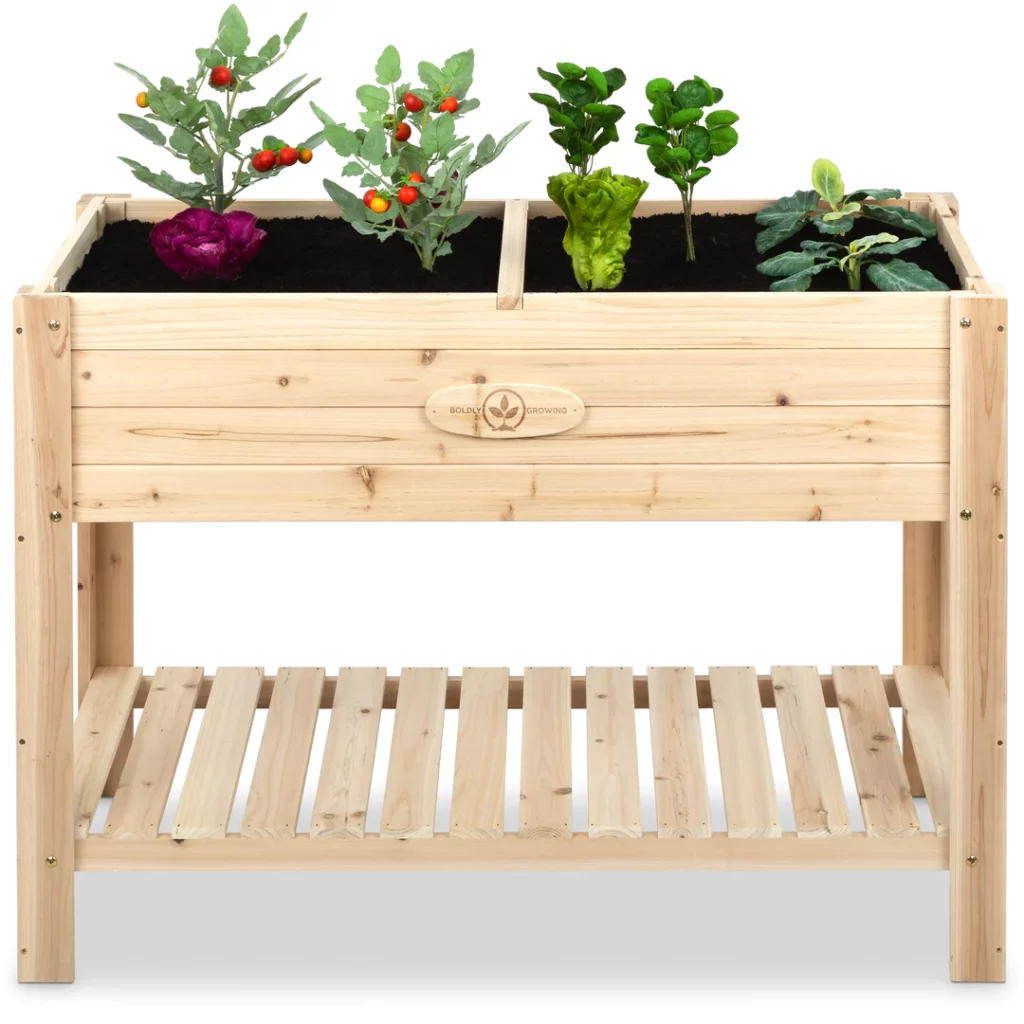
Here is a more affordable option made from fir grown in China that’s similar to yellow pine. The wood comes unfinished and should be treated before being used (with a natural option such as linseed oil).
Here is another affordable option, which is the cheapest one on this list. It is made from fir wood and will also need to be treated before using.
Terra Cotta Pots

Terra cotta pots have been used for centuries around the world. They are beautiful earthenware and made from natural materials. The clay material is porous, allowing plants to breathe and moisture to be regulated (meaning, you may have to water more frequently in a hot climate).
The one major downfall with terra cotta pots is their fragility. They can easily crack and/or break by accident or if left in freezing conditions where the ice can crack the pot. Since these pots are so fragile but also readily available, it’s recommended to find some locally to inspect for cracks.
The other downside to terra cotta pots is that they have a smaller capacity compare to some of the other options like metal tubs or wooden boxes.
There is also some concern that since terra cotta pots are made from clay, they may contain trace amounts of heavy metals, so that is something to be mindful of.
Terra Cotta pots are generally very easy to find at your local gardening or hardware store, but here are a few places to buy them online:
Glass Pots & Mason Jars
Glass is another good option. Similar to terra cotta pots, they have a smaller capacity and are prone to breaking. But unlike clay pots, glass is inert and doesn’t leach.
Make sure you look for glass that has holes in the bottom or some sort of watering/draining system.
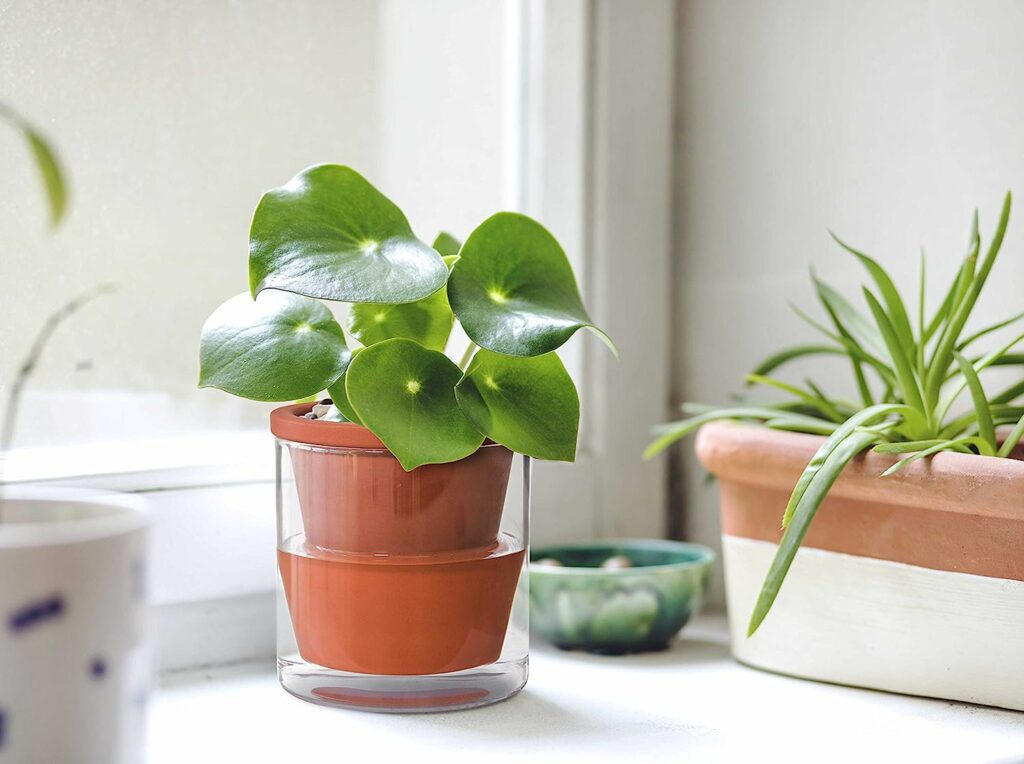
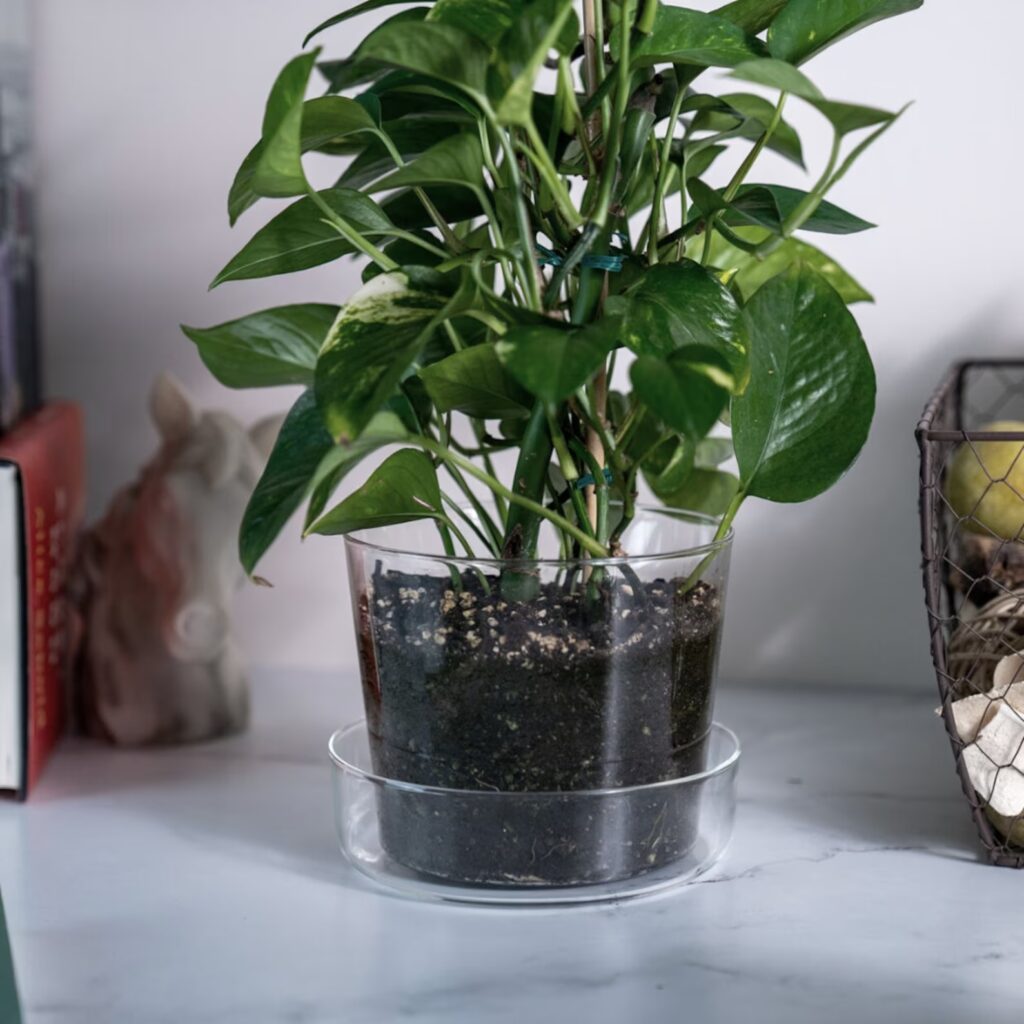
Terra Cotta Glass Pot
This particular product utilizes the porosity of terra cotta combined with glass to create a self-watering mechanism.
Sheer Glass Pot (Etsy)
This product is made of entirely borosilicate glass so you can visualize the root system. Just don’t put this in a windowsill or algae can grow.
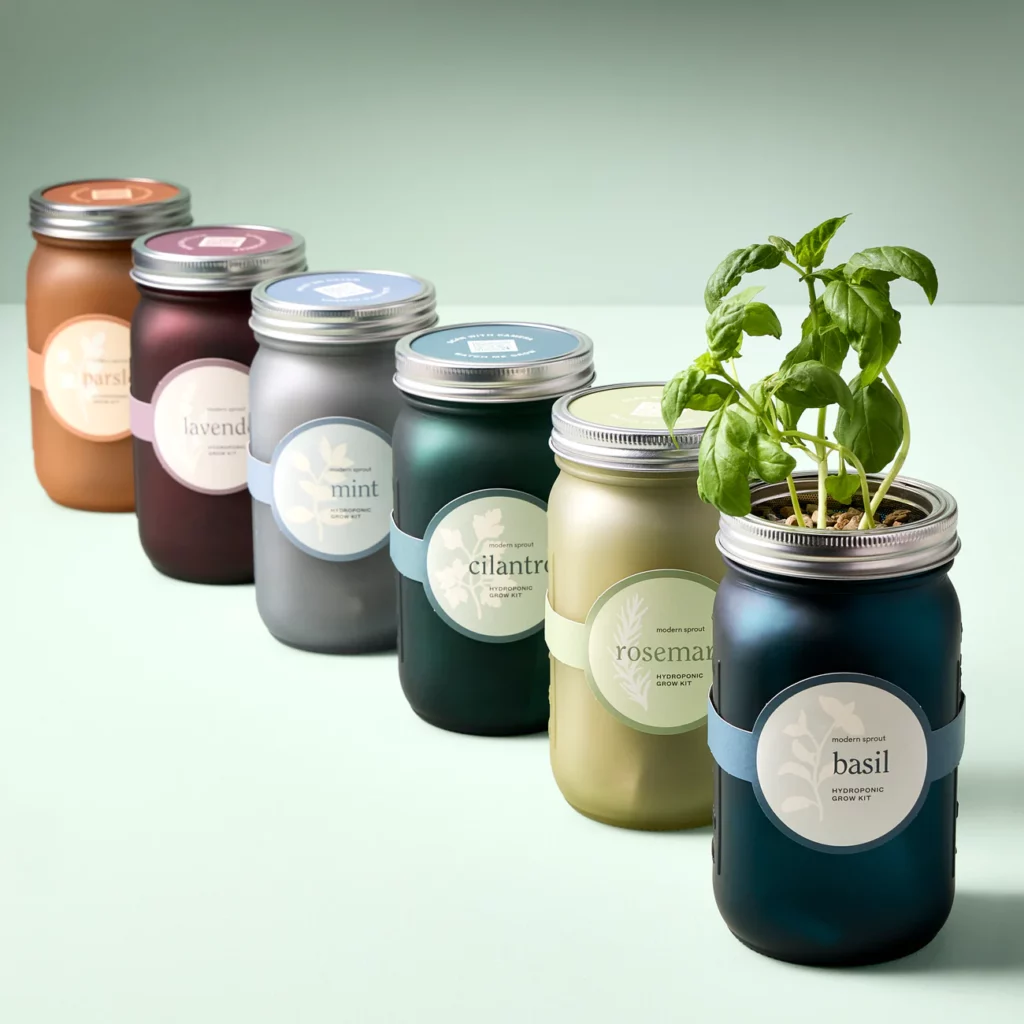
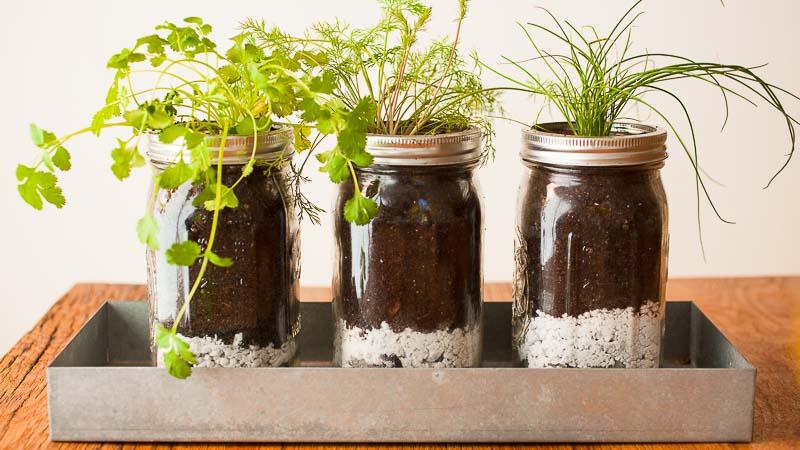
Garden Jar
This product uses a painted mason jar which is both pretty and protects against algae growth so feel free to put this beauty on your windowsill! This is also hydroponic meaning there is no soil. Plus, it has the option of picking what herb seeds you want and includes the supplies needed for the hydroponic set up.
Mason Jar Tutorial
This link is not a product, but a DIY tutorial. Mason jars are used for a variety of purposes and now that can include gardening. This tutorial uses a few easily found supplies to create a mini herb garden of your choosing.
So who’s ready to start growing?! Learning to grow your own produce is a valuable skill to becoming more self-sustainable and experiencing the benefits of the freshest fruits, veggies, and herbs at your fingertips.
There is a learning curve to growing your own food, but you can do it! Don’t forget to start small to make sure you have enough time to tend to all your new plants. Here’s to green thumbs!
About the Author

Rebecca Krauss, aka Nurse Bec, works with women to help ease the transition into non-toxic living. She offers coaching services not only for advice/education about non-toxic living, but also to support individuals in the process and help them accomplish the nontoxic life they desire—whatever that may look like! This is done through 1:1 coaching and programs as well as group coaching. You can find her at www.coachingwithnursebec.com and you can book a free call here to find out if working with Nurse Bec would be a good fit for you.






